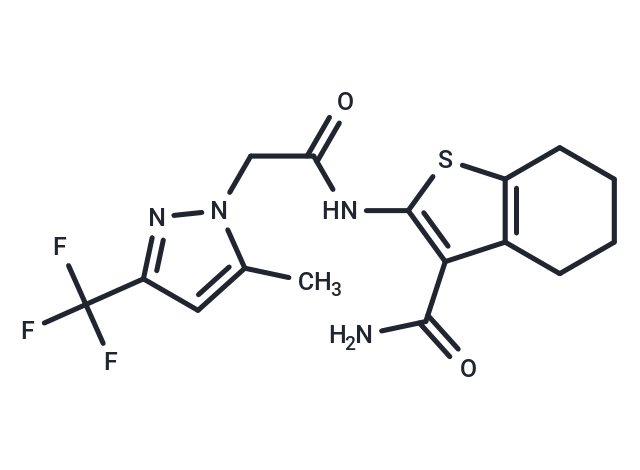Shopping Cart
- Remove All
 Your shopping cart is currently empty
Your shopping cart is currently empty

HBT1 is an AMPA receptor potentiator that induces production of brain-derived neurotrophic factor (BDNF) and exhibits little agonistic effect in primary neurons. HBT1 binds to ligand-binding domain of AMPA-R in glutamate dependent manner.

| Pack Size | Price | Availability | Quantity |
|---|---|---|---|
| 10 mg | $40 | In Stock | |
| 25 mg | $79 | In Stock | |
| 50 mg | $118 | In Stock | |
| 100 mg | $198 | In Stock | |
| 200 mg | $296 | In Stock | |
| 1 mL x 10 mM (in DMSO) | $41 | In Stock |
| Description | HBT1 is an AMPA receptor potentiator that induces production of brain-derived neurotrophic factor (BDNF) and exhibits little agonistic effect in primary neurons. HBT1 binds to ligand-binding domain of AMPA-R in glutamate dependent manner. |
| In vitro | HBT1 bound to the ligand-binding domain (LBD) of AMPA-R in a glutamate-dependent manner.?The mode of HBT1 and LY451395 binding to a pocket in the LBD of AMPA-R differed: HBT1, formed hydrogen bonds with S518 in the LBD.?Lower agonistic profile of HBT1 may associate with its lower risks of bell-shaped responses in BDNF production in primary neurons. |
| Molecular Weight | 386.39 |
| Formula | C16H17F3N4O2S |
| Cas No. | 489408-02-8 |
| Smiles | Cc1cc(nn1CC(=O)Nc1sc2CCCCc2c1C(N)=O)C(F)(F)F |
| Relative Density. | 1.58 g/cm3 (Predicted) |
| Storage | Powder: -20°C for 3 years | In solvent: -80°C for 1 year | Shipping with blue ice. | ||||||||||||||||||||
| Solubility Information | DMSO: 3.87 mg/mL (10.02 mM), Sonication is recommended. | ||||||||||||||||||||
Solution Preparation Table | |||||||||||||||||||||
DMSO
| |||||||||||||||||||||

Copyright © 2015-2025 TargetMol Chemicals Inc. All Rights Reserved.